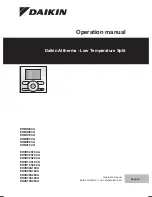
• Supplemental safeguarding must be provided. Personnel must not be exposed to hazards
• The means of bypassing must be within full view of the safeguard to be bypassed
• Initiation of motion should only be through a hold-to-run type of control
• All emergency stops must remain active
• The means of bypassing must be employed at the same level of reliability as the safeguard
• Visual indication that the safeguarding device has been bypassed must be provided and be readily observable from
the location of the safeguard
• Personnel must be trained in the use of the safeguard and in the use of the bypass
• Risk assessment and risk reduction (per the relevant standard) must be accomplished
• The reset, actuation, clearing, or enabling of the safeguarding device must not initiate hazardous motion or create a
hazardous situation
Bypassing a safeguarding device should not be confused with
muting
, which is a temporary, automatic suspension of the
safeguarding function of a safeguarding device during a non-hazardous portion of the machine cycle. Muting allows for
material to be manually or automatically fed into a machine or process without issuing a stop command. Another term
commonly confused with bypassing is
blanking
, which desensitizes a portion of the sensing field of an optical safeguarding
device, such as disabling one or more beams of a safety light curtain so that a specific beam break is ignored.
7.5.12 Adjustable Valve Monitoring (AVM) Function
The Adjustable Valve (Device) Monitoring (AVM) function is similar in function to One-Channel External Device
Monitoring (1-channel EDM, see
External Device Monitoring (EDM)
on page 53). The AVM function monitors the state of
the device(s) that are controlled by the safety output to which the function is mapped. When the safety output turns Off, the
AVM input must be high/On (+24 V dc applied) before the AVM timer expires or a lockout will occur. The AVM input must
also be high/On when the safety output attempts to turn On or a lockout will occur.
Adjustable Valve Monitoring AVM is a way to check the operation of dual channel valves. The force
guided N.C. monitoring contacts of the valves are used as an input to detect a “stuck on” fault
condition and will prevent the safety controller outputs from turning On.
Adjustable Valve
Monitoring
50 ms
to
5 sec.
50 ms
to
5 sec.
Don’t Care
Don’t Care
Closed
Open
SO1
AVM
Note: 50 ms to 5 s time period is adjustable in 50 ms intervals (default is 50 ms).
Figure 17. Timing logic—AVM Function
XS/SC26-2 and SC10-2 Safety Controllers
40
www.bannerengineering.com - Tel: + 1 888 373 6767
















































